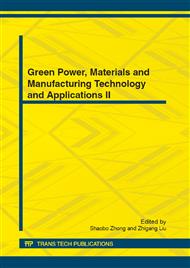p.460
p.464
p.469
p.475
p.481
p.486
p.491
p.495
p.500
Green Agricultural Products Supply Chain Management Mode under Low Carbon Economy
Abstract:
The key is to make integration of the supply chain system, lower the cost of agricultural products in the international market, improve the competitiveness of agriculture products and increase the income of the farmers from the supply chain. This paper the concept of agricultural products of agriculture products. The characteristics and supply chain are discussed in the paper. Then, this paper analyzes the agricultural supply chain model based on supply chain management. Finally, this paper puts forward the establishment of China's agricultural supply chain solutions. The purpose of this paper is to help develop agricultural supply chain.
Info:
Periodical:
Pages:
481-485
Citation:
Online since:
November 2012
Authors:
Price:
Сopyright:
© 2012 Trans Tech Publications Ltd. All Rights Reserved
Share:
Citation:


